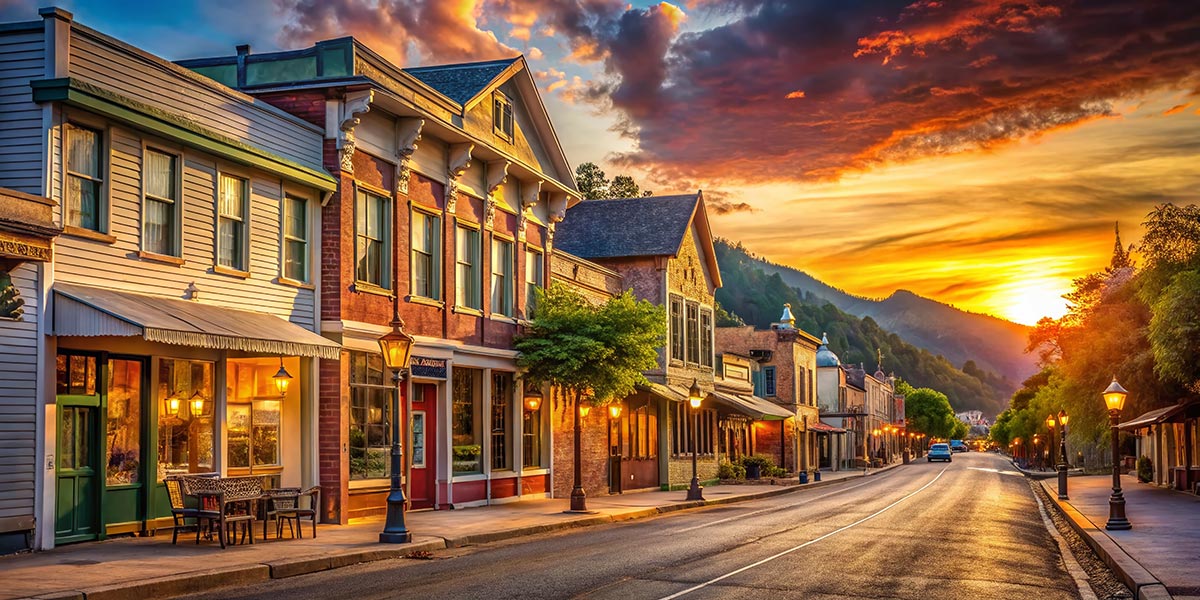I often find myself driving through small towns, the kind you only end up in if you’ve missed an exit or taken a wrong turn. You know the ones—rows of empty storefronts with faded awnings, a diner with a “For Sale” sign in the window, the old movie theater now boarded up, its marquee frozen in time. The streets are quiet, almost too quiet, as if the air itself remembers voices and laughter that no longer live there. These towns haunt me. Not because of what they are now, but because of what they represent about who we’ve been—and what we’re losing.
Main Streets as Mirrors
For much of American history, Main Street wasn’t just geography; it was identity. The hardware store owner knew your father. The barber had cut your hair since you were a kid. The post office wasn’t just for stamps—it was where news traveled faster than the mail. Main Street mirrored back a sense of belonging. When you walked down those blocks, you weren’t just another face in the crowd. You were someone’s neighbor, someone’s son, someone with roots.
Today, too many Main Streets feel like ghosts of that promise. The chain stores moved in, or the factories closed, and the people who could leave did. What’s left behind isn’t just shuttered windows—it’s the hollowing out of community itself.
The Price of Progress
It’s easy to say this is just progress. After all, we can order anything online and have it at our doorstep in a day. The mall replaced the corner shop; the superstore replaced the mom-and-pop. But the price of progress is always more than the receipt total. When Main Streets vanish, so do the casual connections that knit us together. The old-timer at the feed store who gave you advice for free, the shopkeeper who kept a running tab until payday, the neighbor you’d always bump into at the bakery—these weren’t just transactions. They were touchstones of trust.
We traded that for efficiency, and in some ways, we’ve gained convenience. But convenience doesn’t sit across from you at the diner and ask about your mother’s health. Convenience doesn’t teach you patience when you wait in line at the post office, listening to the stories of the person in front of you. We’ve mistaken speed for progress and efficiency for connection, and our Main Streets remind us of that loss.
A Symbol of Belonging
Main Street was never perfect. It could be insular, resistant to outsiders, and limited in opportunities. But at its best, it was a symbol of belonging. Walking down Main Street was walking through your own story—the shops you worked at as a teenager, the diner where you first held hands with someone you loved, the library where your mother insisted you do your homework. These places weren’t just backdrops; they were characters in the story of who you were becoming.
When they disappear, a piece of our shared story disappears with them. The erasure of these places isn’t only economic—it’s emotional. It’s as though someone has torn out the middle chapters of a book we’re still trying to finish.
What We Carry Forward
The question then becomes: What do we carry forward from these forgotten towns? Maybe it’s the reminder that community isn’t something you buy; it’s something you build, one person at a time. Maybe it’s the realization that belonging doesn’t live in strip malls or Amazon warehouses—it lives in eye contact, in showing up, in remembering names.
As much as Main Streets are vanishing, there are small sparks of revival. I’ve seen it: a coffee shop taking over an empty storefront, a mural painted on a crumbling wall, a weekend farmer’s market drawing people back to the square. It’s not enough to restore what was, but maybe that’s not the point. Maybe the point is to reclaim the spirit of Main Street, even if it looks different than it once did.
What These Towns Tell Us
When I walk down an empty Main Street, I hear more than silence. I hear the story of how quickly we forget what holds us together when we chase only what makes life faster or cheaper. These towns are warnings, but they’re also invitations. They tell us that community has to be chosen, again and again, in a world that pushes us toward isolation.
If we want to avoid becoming strangers in our own stories, maybe the lesson is simple: slow down, step off the highway, and remember the places that once remembered us. Because in the end, Main Street isn’t about the buildings. It’s about us—and whether we still believe that the ties between people are worth holding onto.
